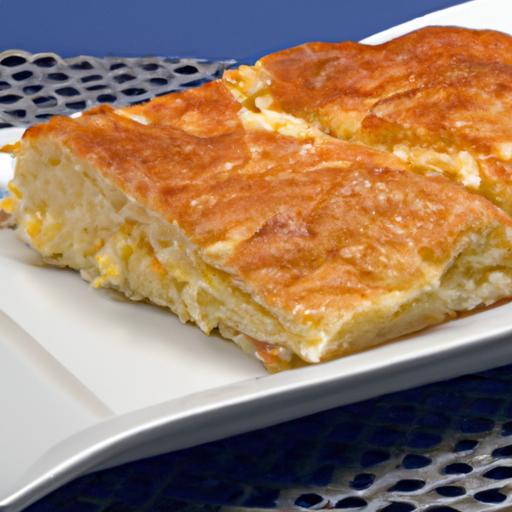There’s something almost magical about a perfectly puffed pita bread-its golden, blistered surface hiding a soft, airy pocket inside, ready to cradle your favorite fillings. But have you ever stopped to wonder what sorcery goes on in the oven to transform a simple flat circle of dough into this delightful, balloon-like marvel? The secret lies in the intense embrace of high heat. In this article, we’ll unravel the science behind how soaring temperatures cause pita to puff up like a freshly inflated balloon, turning humble ingredients into a culinary wonder that has captured hearts across centuries and continents. Prepare to dive into the steamy, sizzling world where heat meets dough and puffs into perfection.
How high heat works its magic to make pita puffy is a fascinating culinary secret that elevates this humble flatbread into a light, airy pocket masterpiece. Originating from the Middle East, pita’s signature puff is born from the rapid steam expansion inside the dough when exposed to intense oven temperatures. This science-driven transformation creates the perfect puff, inviting endless opportunities to stuff and savor.
Prep and Cook Time
- Preparation: 20 minutes
- Proofing: 1 to 1.5 hours
- Baking: 4-6 minutes per batch
- Total Time: Approximately 1 hour 30 minutes
Yield
8 perfectly puffed pita breads, approximately 6-7 inches in diameter each
Difficulty Level
Medium – Ideal for bakers comfortable with yeast doughs but beginner-friendly with careful attention to oven temperature.
Ingredients
- 2 cups all-purpose flour, sifted
- 1 cup whole wheat flour (optional for a rustic note)
- 1 packet (2 ¼ tsp) active dry yeast
- 1 ¼ cups warm water (about 110°F/43°C)
- 1 tbsp olive oil
- 1 tsp granulated sugar
- 1 tsp salt
Instructions
- Activate the Yeast: In a small bowl, combine warm water, sugar, and yeast. Let it sit for 5-10 minutes until foamy and bubbly, indicating active yeast.
- Mix the Dough: In a large bowl, whisk together the all-purpose flour, whole wheat flour (if using), and salt. Make a well in the center and add the yeast mixture and olive oil.
- Knead: Mix and knead by hand or with a stand mixer fitted with a dough hook for about 8-10 minutes until the dough feels smooth, elastic, and slightly tacky.
- First Rise: Place the dough in a greased bowl, cover with a damp cloth or plastic wrap, and let it rise in a warm spot for about 1 to 1.5 hours, or until doubled in size.
- Preheat the Oven: Place a pizza stone or a heavy-duty baking sheet on the middle rack of your oven. Preheat the oven to 500°F (260°C) for at least 30 minutes to ensure intense even heat-this step is crucial for puff formation.
- Shape the Pitas: Turn out the dough onto a lightly floured surface and divide it into 8 equal pieces. Roll each piece into a tight ball, then use a rolling pin to flatten each ball into an even circle about ¼ inch thick.
- Bake in Batches: Slide 2-3 flattened dough rounds onto the hot pizza stone or baking sheet. Bake for 4-6 minutes until they puff dramatically and develop golden brown spots but are not burning.
- Cool and Store: Remove the puffy pitas promptly and cover them with a clean kitchen towel to keep soft. Repeat baking with remaining dough balls.
Chef’s Notes and Tips for Success
- Crucial heat: The secret lies in the oven’s blistering heat. Make sure your baking surface and oven are fully preheated; moisture instantly trapped within the dough transforms into steam, puffing your pita like a balloon.
- Rolling technique: Avoid rolling too thin; around ¼ inch thickness allows steam to build pressure for puffing but prevents the dough from tearing.
- Make-ahead tip: Dough can be prepared a day in advance and refrigerated overnight. Bring to room temperature before baking for best puff.
- Common issue: If pitas don’t puff, your oven is likely not hot enough or the dough is rolled too thick/thin. Adjust accordingly and shake your baking surface slightly when placing dough to help start puffing.
- Alternative baking: If you don’t have a pizza stone, a cast iron skillet heated on the stovetop and flipped carefully can produce a similar puff using direct heat.
Serving Suggestions
Pitas are incredibly versatile-serve them stuffed with Mediterranean falafel, fresh tabbouleh, or grilled meats. For a visually striking presentation, brush warm pitas with olive oil and sprinkle with za’atar or sesame seeds before baking. Garnish with fresh herbs like parsley or mint for a fragrant finish. Pair with dips like hummus, baba ganoush, or a cooling tzatziki sauce to enhance the sensory journey.

| Nutrient | Per Serving (1 pita) |
|---|---|
| Calories | 140 kcal |
| Protein | 5 g |
| Carbohydrates | 28 g |
| Fat | 2.5 g |
For deeper insight on the science behind baking and yeast activation, explore this comprehensive guide.
Explore more bread baking techniques and recipes in our Ultimate Artisan Bread Guide to expand your home bakery skills.
Q&A
Q: What exactly happens inside the oven that makes pita bread puff up?
A: When pita dough hits the scorching heat of the oven-often soaring around 450°F (232°C) or higher-the moisture inside the dough vaporizes instantly, turning into steam. This steam acts like an invisible balloon, inflating the dough from within and creating that signature pocket. The heat also causes the outer layer to quickly set and harden, trapping the steam and maintaining the puff.
Q: Why does the heat need to be so high to get a perfect puff?
A: High heat is essential because it triggers rapid steam production before the dough’s surface hardens. If the oven’s temperature is too low, the crust sets slowly, allowing steam to escape and the dough to flatten instead of puffing. A blazing oven ensures a quick puff and a sturdy shell, perfect for filling.
Q: Is this puffing effect unique to pita, or do other breads do this too?
A: Puffing from steam is a fantastic trick seen in a few breads, but pita is a superstar because it’s rolled evenly thin and baked at extreme heat. Similar magic happens with certain flatbreads like naan or some types of umbrella-shaped breads, but pita’s pocket is especially pronounced and reliable thanks to its technique.
Q: How does the dough itself contribute to this puffing magic?
A: The dough is like a sponge, holding moisture that’ll become steam. Its gluten network acts as a flexible yet sturdy cage. When heated, this network traps steam pockets, stretching and inflating instead of bursting. Proper kneading and hydration levels make the dough elastic enough to balloon but strong enough to hold shape.
Q: Can home bakers replicate this puffing effect without a professional oven?
A: Absolutely! While professional ovens blast incredible heat, a well-preheated baking stone or cast-iron skillet in a super hot oven can mimic the intense environment pita loves. The key is rapid heat transfer and moisture retention. Also, placing pita directly on a hot surface rather than a cold tray boosts the chance of that satisfying puff.
Q: What scientific principles are at play during the puffing of pita bread?
A: The process is a beautiful interplay of thermodynamics and food chemistry. As heat transfers into the dough, water molecules vaporize, increasing internal pressure. Gluten proteins denature and set, preserving the expanded shape. Meanwhile, starches gelatinize, creating the crust that locks in the pocket. It’s a perfect orchestration of heat, steam, and molecular transformations.
Q: Does the thickness of the dough impact the puffing?
A: Yes! Thinly rolled dough heats through quickly and evenly, producing more steam in a burst, which maximizes puff. Thick dough may not heat fast enough internally, failing to build the steam pressure needed to inflate. That’s why pita is traditionally rolled to a delicate thinness, just right for puffing on high heat.
Q: Why is the pita pocket important culturally and culinarily?
A: That magical pocket is more than a fun baking quirk-it revolutionized eating! It turned pita into a natural edible vessel, perfect for stuffing with meats, veggies, and dips. This pocket helped pita become a staple in Middle Eastern and Mediterranean cuisine, marrying practicality with deliciousness in one puffy bread.
Concluding Remarks
As the heat rises and the oven blazes, the humble pita undergoes a breathtaking transformation-a quick puff of steam trapped within its layers, creating that iconic pocket beloved worldwide. High heat doesn’t just bake the bread; it choreographs a delicate dance of chemistry and physics, turning simple dough into a soft, airy vessel ready to cradle your favorite fillings. So next time you savor a warm, puffy pita, remember the silent magic of intense heat working behind the scenes, making each bite a marvel of culinary science.


